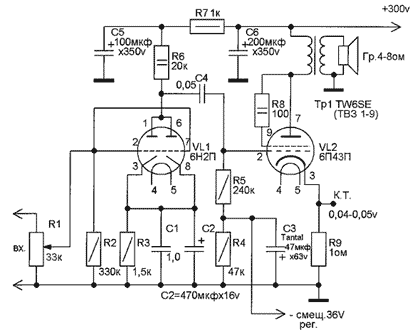
In addition to all its sonic merits, this scheme is for the development of the lamp technique because of its simplicity of Assembly and minimum number of parts. Here it is necessary to mention some specifics on the selection of components, Assembly, nanoledge and use of such devices. Tube amps are rightly criticized for 'vague' bass. The reason for this is the high output impedance tube amp, so professionals suggest that you calculate and organize speakers for a specific amplifier tubes. Some experts make even complex output transformers, where each output winding is running on a separate speaker in the speaker system! To reduce harmonic distortion and fixing of acoustic background method used sectional layer-by-layer winding as a network and output transformers (for example the placement of the primary winding between the halves of the secondary). It is considered appropriate to use toroidal transformers (all familiar with their advantages), but making them at home is quite difficult and requires skill and patience.
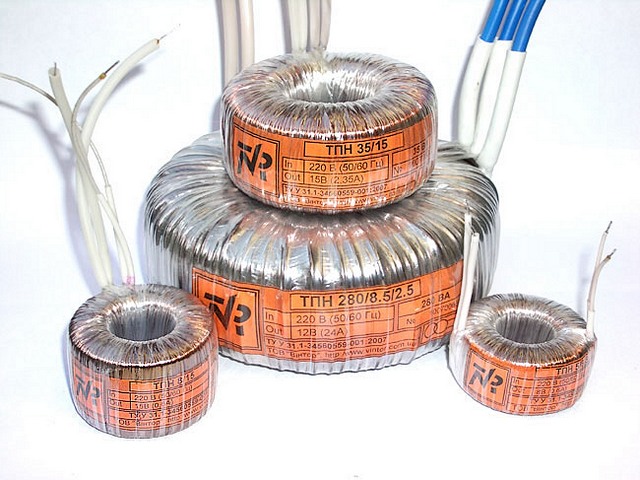
Hence the second immutable law technics Hi-End: the production of transformers should be given as much attention as this is 90% responsible for the sound quality of your home-made unit. Very important issue is the construction of the power supply of the amplifier. Personally, I would not advise to apply the semiconductor rectifiers diodes-very they dilute the sound.The most sensible in my opinion the solution - applying centrone lamps with LC filter chain. The advantages of this scheme is undeniable - as the heating of the cathodes of the rectifier, the voltage in the amplifier circuit serves to gradually (and not simultaneously as in the application of semiconductors where I'd have to update the schema relay switch anode voltage to increase the lifetime of electron tubes). The most common rectifier available to the diyer is the lamp type CS.

The use of rectifiers and filters in the filament circuits of the lamps is not desirable - apart from the fact that there is a risk of degradational associated with the use of semiconductors, some lights categorically refuse 'good work,' when their filament circuit is supplied with a constant voltage! In addition, the amplifier circuit must be complemented network interference filter that will protect the unit from heap LF/HF interference from household AC power. You should also focus on the choice of passive components for a tube amp. Resistors desirable to use only a metal film, such as MLT, with minimal deviation from the nominal value. And though not every ham can get, for example, patipatti film resistors (these can only be purchased for the occasion, and some of them not seen!) should be avoided (where possible) from the use of wire-wound resistor, both domestic and imported.
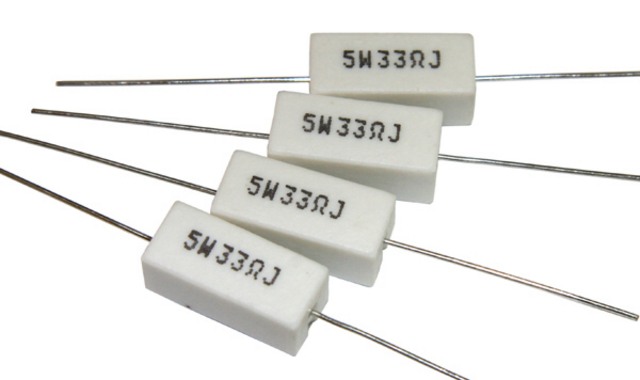 Very critical, should apply to the selection of capacitors are best suited with the dielectric polypropylene film and polycarbonate.
Very critical, should apply to the selection of capacitors are best suited with the dielectric polypropylene film and polycarbonate. 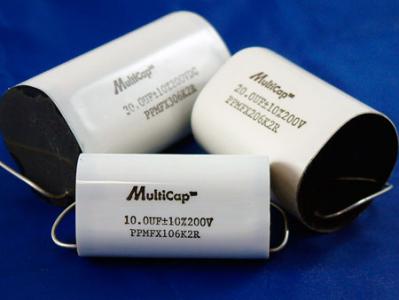
And though not everyone can afford to purchase specialized capacitors for Hi-End Assembly, and all of them are be sure to check before installation in the circuit for leaks, internal resistance, etc.

At worst you can use a paper capacitor type MBM and mica-type CSR-1. The most 'musical' and common lamps for assembling single-ended amplifier, according to many experts, is the bulb NEW and PP. Letters E or EV designation is an indicator of a higher quality of performance of the lamp.
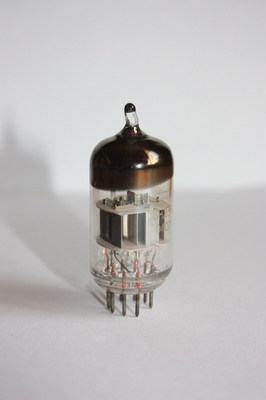
Lots of designs of amplifiers on these lamps, so concepts will not lead, I think it should bring their passport details in the attached archive [attachment=4].

Is as follows (where possible) to avoid the application of any correction circuits sound, in the manufacture of the amplifier tubes. If this condition is not feasible, should be used as reliable as possible potentiometers firms Alps
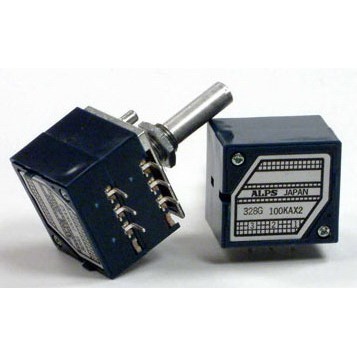
or Noble - puncture or breakage of the adjustment resistor is fraught with very serious consequences, in addition, the use of low-quality potentiometers can make to the playback signal noticeable distortion. For the manufacture of the chassis of the amplifier used tested over the years the material is aluminum because of its strength, ease of processing at home). All connections when mounting the amplifier on the lamps are made on the tube sockets. The panels must be chosen with extreme picky - it's better if it will be ceramic panel with reliable collet clamps to ground contacts of the lamps. Mounting wire when assembling is better to use silver-plated or tin-plated; the same applies solder - high temperature with a high content of silver fits perfectly. All plug connections (inlet/outlet) it is desirable to make the application more reliable connectors-even better use of terminal blocks with fixing 'the nut'. The speaker should be connected to the amplifier conductors (with a cross section of 0.75 kV/mm and above) of copper (and in any case not Chinese bimetal). A few words about acoustics for a tube amp. Since the implementation of a single-step scheme is impossible to achieve high-power amplifier, it is advisable to use high quality AC high sensitiveness, collected by the horn circuit.
Another caveat of the use of amplifiers on lamps, professionals declare the use of separate lines connecting power amplifying complex (right panel) conductor not less than 6 square millimeters (like welding cable). My personal opinion is exaggerated. I think it will be quite reliable, the use of standard wire wiring (2,5 kV/mm) and sockets with spring-loaded pins securely in order to avoid chatter and noise poor connection of the power supply circuits. We hope that this article, which summarizes the main criteria for the design and Assembly of tube sound amplifying equipment, serve as a reminder for radio Amateurs, who decided to do the first time Assembly of the apparatus of this category!






